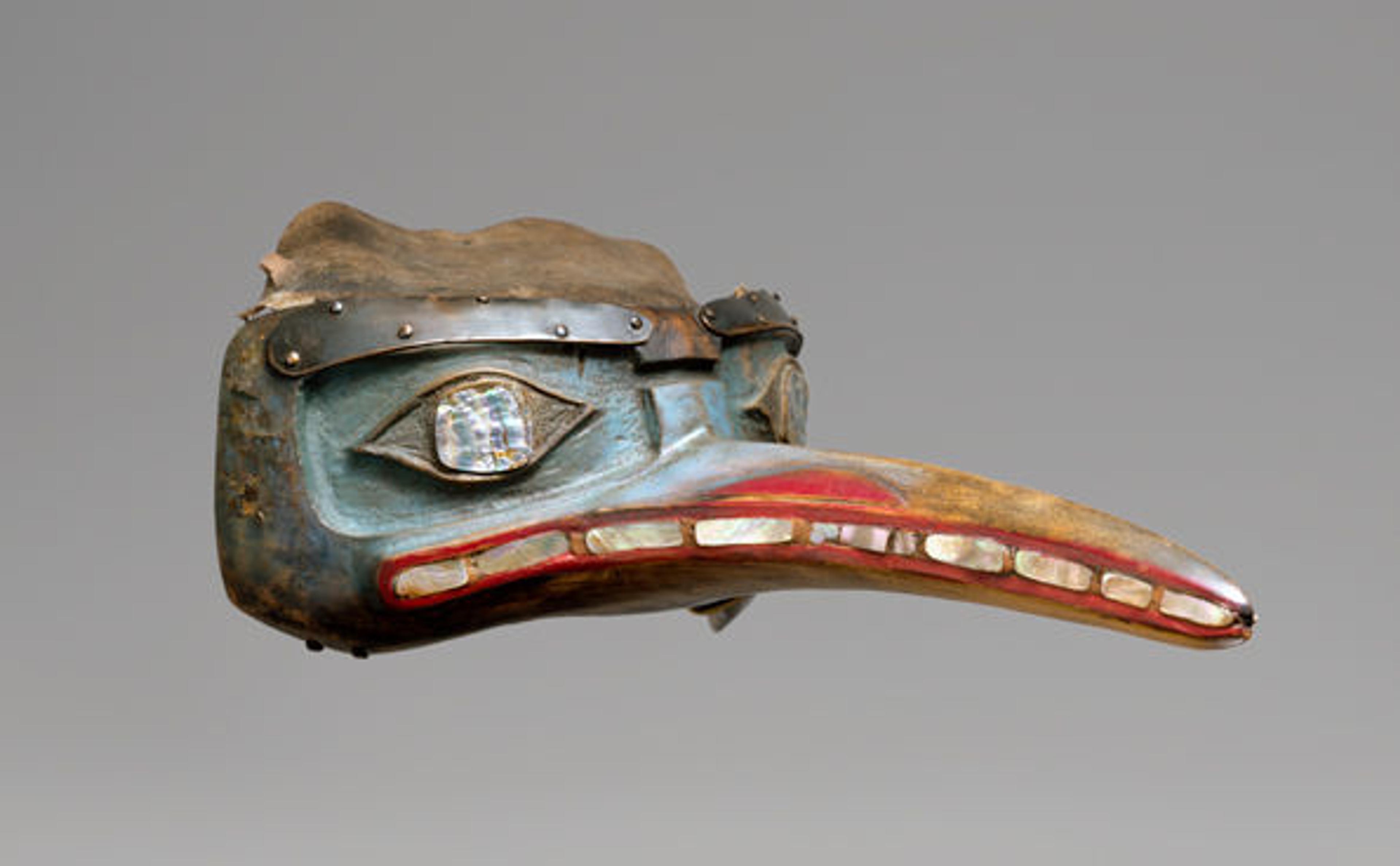«At the first TAG meeting of the year, we chose to explore the Arts of Africa, Oceania, and the Americas. We were particularly struck by one object, which we want to share with you.»
Mosquito Mask, before 1843. Tlingit culture (United States, Alaska). Wood, paint, copper, shell, Native-tanned skin; H. 4 1/3 x W. 6 3/4 in. (11 x 17.1 cm). The Metropolitan Museum of Art, New York, Gift of Ralph T. Coe, 2002 (2002.602.1)
When you first look at this object, it stares back at you. It sits in its case and stares. The eyes don't look realistic, but they do appear unnervingly human. The expression is vaguely arrogant, and the refined structure resembles masks worn by Elizabethan character performers. In fact, Karl initially remarked that this object reminded him of a Shakespearean mask. The idea isn't too terribly far off.
This mask, made by a native Alaskan group called the Tlingit people, was created for a theatrical purpose. A person wearing this mask would be striking for others to see. Mosquitoes—when you separate them from their creepy, pestilent nature—aren't entirely unimpressive things. Their questionably motivated bloodlust is as enticing as it is bothersome. For the Tlingit, mosquitoes played the important role of "spirit helpers" and thus cropped up quite frequently in spiritual ceremonies.
No matter how rustic or unfamiliar this mask might be to us today, it is as much a costume as anything else we might see on stage or screen. A costume has both a practical and aesthetic purpose, and we should not forget that this mask was created to be worn. Many of the objects in the Arts of the Africa, Oceania and the Americas galleries derive their beauty not only from the way in which they were created but also from the contexts in which they were used.
Anna. Drawing of the Mosquito Mask, 2012. Ink drawing on paper
If you wore a mask depicting an insect, bird, or mammal, which creature would you choose and why?
We welcome your response to this question below.
